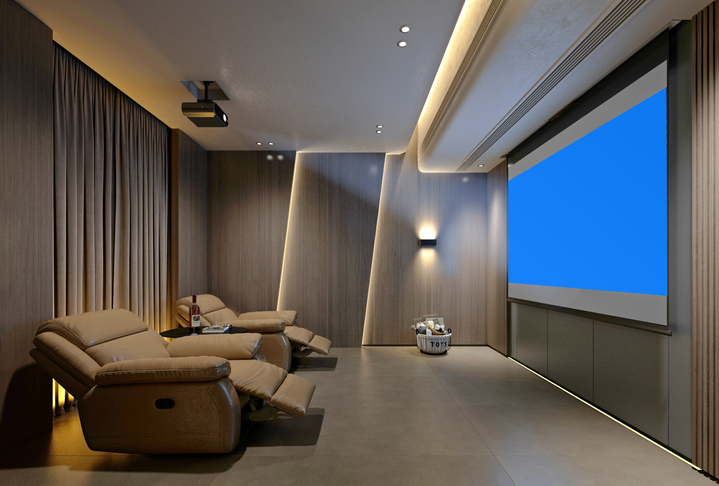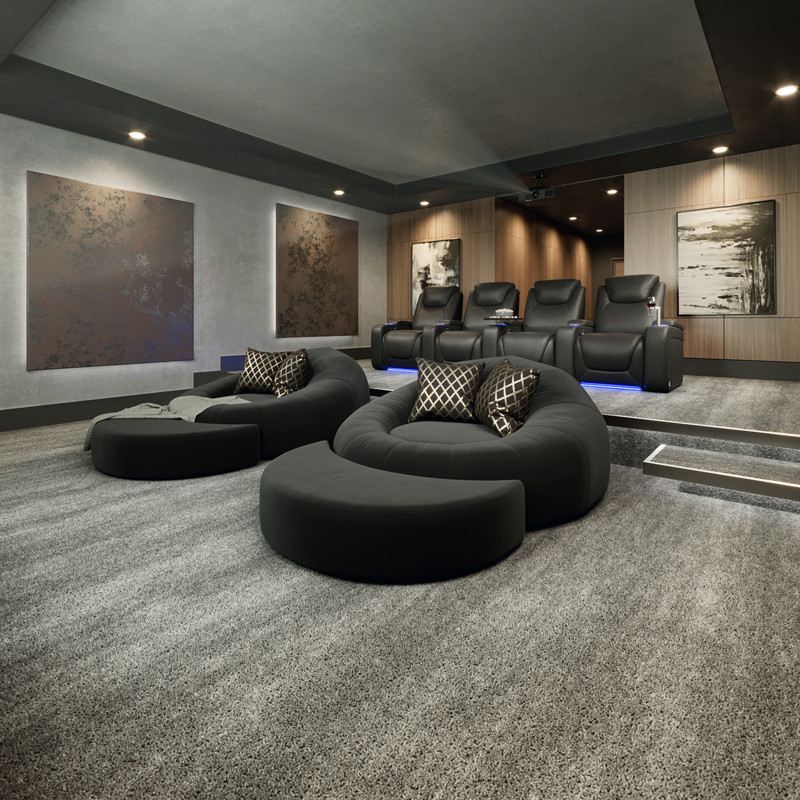Professional Tampa Home Theater Installation for a Effortless Installation
Professional Tampa Home Theater Installation for a Effortless Installation
Blog Article
Home Theater 101: Everything You Required to Know for a Cinematic Experience in your home
Developing a home movie theater that rivals the motion picture experience of a business theatre includes mindful consideration of numerous components, consisting of display option, audio systems, and space format. Each aspect plays an essential duty in achieving the preferred setting and functionality. Whether you are contemplating the ideal display dimension or the details of border sound, understanding these basics is necessary. As we discover these critical components, it becomes apparent that the options made can substantially affect your general watching experience, leaving one to consider exactly how these decisions will shape your personal cinema.
Choosing the Right Screen
When establishing a home movie theater, selecting the ideal screen can make or damage the checking out experience - tampa home theater installation. The display works as the focal point of your arrangement, influencing picture quality, viewing angles, and general visual. Trick elements to think about include screen size, resolution, and kind
First, establish the proper screen size based on your space dimensions and seating range. Next, pick in between various display kinds, such as fixed-frame, mechanized, or retractable displays, each offering distinctive benefits.
Resolution is one more important factor. For a truly immersive experience, take into consideration a screen created for 4K or perhaps 8K web content, guaranteeing intensity and clearness. Furthermore, consider the display's gain, which influences brightness and comparison; a higher gain can enhance illumination in well-lit areas, while a lower gain may be better for darker environments.
Picking Sound Equipment
Audio tools is an important part of any home movie theater system, substantially boosting the total viewing experience. The option of audio equipment can identify the deepness, clarity, and immersion of audio, vital for producing a motion picture ambience.
When picking audio equipment, think about a border sound system, which typically consists of a receiver, several speakers, and a speaker. A 5.1 or 7.1 channel system is advised, where the first number represents the audio speakers and the second the speaker, offering an immersive soundscape. The receiver is the heart of the system, managing audio and video signals, and must support modern-day layouts like Dolby Atmos for an enhanced spatial experience.
Quality audio speakers are crucial; search for versions that offer a well balanced sound profile with excellent bass reaction. Floor-standing speakers can create richer sound, while bookshelf options conserve space. Furthermore, think about cordless alternatives for ease of installment, although wired systems usually supply premium performance.

Ideal Seating Arrangements
Creating an ideal home theater experience hinges dramatically on optimum seating setups. The arrangement of seats plays an important function in both convenience and watching quality, directly affecting the overall cinematic experience.
First, consider the screen size and watching distance. An usual standard is to place seats at a distance about 1.5 to 2.5 times the angled size of the screen. This guarantees an immersive experience without stressing the eyes.
Following, elevation is important. If your seats remains in a tiered format, the back rows ought to be more than the front to prevent obstructions. For flat seats, make sure that the front row is not also near the display, and that every person has a clear line of vision.
Furthermore, consider the plan in regards to social dynamics. Team seating can boost the communal experience, while specific seats may be liked for personal viewing.

Lastly, focus on comfort with ergonomic seating that sustains prolonged watching periods. Including reclining chairs or supported seats can considerably improve the experience, making the home learn this here now theater a preferred location for both amusement and leisure.
Lighting and Setting
Effective lighting and ambiance are crucial parts of a properly designed home theater, as they dramatically influence the checking out experience. The right illumination can improve the motion picture feel, while poor options can take away from it. For optimum results, think about a split lights approach that includes ambient, task, and accent lighting.
Ambient illumination supplies basic lighting, ensuring that the space is not totally dark, which can strain the eyes. Dimmer switches are extremely suggested, you could check here permitting changes based on the content being seen. Task illumination, such as wall sconces or floor lamps, provides practical illumination for activities like reading or navigating the space without interrupting the general environment.
Accent lighting can be used to highlight architectural attributes or produce centerpieces, adding deepness and rate of interest to the room. LED strip lights behind screens or along racks can supply a subtle radiance that improves the visual experience without frustrating the visitor.

Wiring and Installation Tips
A well-planned wiring setup is vital for attaining optimum performance in your home cinema system. Correct electrical wiring not only guarantees top quality audio and video clip signals however also boosts the general aesthetic of your room. Begin by drawing up your layout, identifying where each part will be placed, including your screen, audio speakers, and receiver.
When choosing cables, focus on premium, appropriately determined electrical wiring to reduce signal loss. HDMI wires must be used for video clip connections, while audio speaker cable ought to match the requirements of your speakers and amplifier. Choose in-wall ranked wires to follow security criteria and maintain a tidy look.

Verdict
In recap, developing an outstanding home cinema experience calls for careful consideration of different aspects, consisting of display option, audio tools, seating setups, lights, and wiring. By prioritizing these elements, a cinematic environment can be effectively duplicated, enabling for immersive watching experiences that rival conventional movie theater settings.
Creating a home theater that matches the cinematic experience of a commercial theatre entails mindful factor to consider of numerous parts, consisting of display choice, audio systems, and room layout.When setting up a home theater, picking the appropriate display can make or damage the checking out experience. Next, pick in between various screen kinds, such as fixed-frame, motorized, or retracting screens, each offering distinctive benefits. For a genuinely immersive experience, think about a screen designed for 4K or also 8K web content, making certain intensity and clarity.In recap, developing a remarkable home theater experience calls check that for cautious factor to consider of numerous aspects, including display selection, audio tools, seating plans, lighting, and circuitry.
Report this page